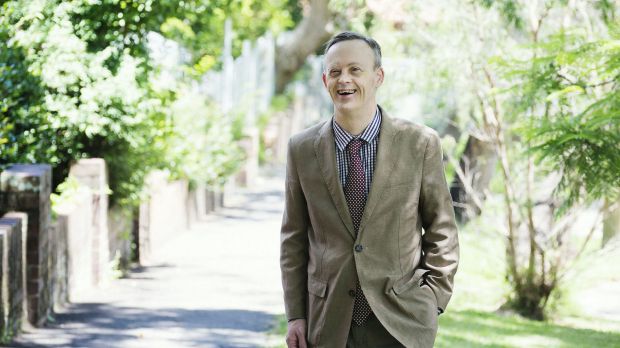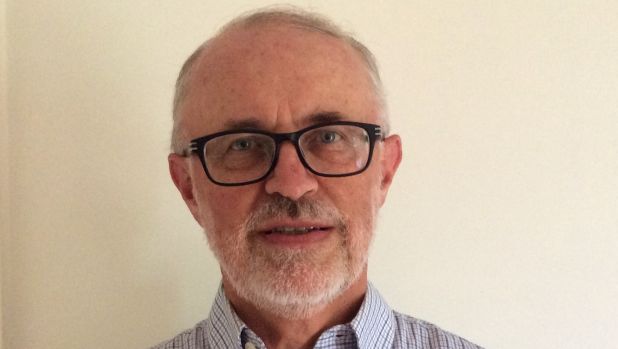Maureen McIlquham drifts between caressing memories and hellish grief when she thinks of her daughter, Michelle.
Michelle wanted to be a copy typist. She longed to have a boyfriend and fall in love, like her sister.
More NSW News Videos
Michelle 'deserved the same treatment'
Maureen McIlquham's daughter died of meningitis after her condition was overlooked by medical staff.
She loved to sing and would often skip off to her room, close the door and play Mariah Carey's All I Want For Christmas Is You as she danced barefoot.
"I miss hearing her music coming through the bedroom wall. I miss her singing. I just miss Michelle," Mrs McIlquham said.

Michelle died of meningitis on May 19, 2009, after a middle ear infection spread to her brain.
The 28-year-old's condition was overlooked by medical staff who couldn't see past her mild intellectual disability, a coronial inquest later found.
Michelle was "evidently in real pain", the deputy coroner said. But her treating doctor wrote off her distress, crying and moaning as a "temper tantrum" after she'd suffered a seizure and was transferred by ambulance to Bankstown Hospital's emergency department.
"She had a mind of her own like anyone else," Mrs McIlquham said. "She was intelligent and bright and charming. She could speak for herself, but by the time we saw a doctor she wasn't talking, she was in pain and so tired."

"I told the doctor she wasn't always like this [non-communicative], but I don't think they believed me."
Her doctor conceded during a coronial inquest that she had suspected meningitis, but failed to test for the deadly infection. She told a coronial hearing her previous experience with people with intellectual disability had clouded her judgment.

"My daughter was very sick and this doctor judged her because of her disability," Mrs McIlquham said.
Michelle was given paracetamol and ibuprofen, and her mother was told to take her home. When Mrs McIlquham refused to leave without her daughter being appropriately assessed and treated, hospital security was called.
Mrs McIlquham still refused to leave but Michelle was removed from her hospital bed, deposited into a wheelchair and pushed out to the kerb and into a taxi at 4am.
Mrs McIlquham made a nest of blankets and quilts on the floor of Michelle's room, in case she had another seizure and rolled out of bed. Michelle's brother found her a few hours later. Her lips were blue. She had suffered cardiac arrest. She died in hospital.
Had Michelle been given a blood test and a CT brain scan her a serious bacterial infection could have been detected and treated with antibiotics and she may have survived, the inquest heard.
The deputy state coroner Hugh Dillon concluded the diagnosis of "tantrum" was "completely inappropriate both because it was offensive and because it does not designate a medical condition".
"It is clear medical staff gave insufficient attention and weight to Mrs McIlquham's concerns … it was even more concerning that she was threatened with security," the deputy coroner Dillon concluded.
In his view, hospital staff did not discriminate against Michelle, but "some did treat her differently from the way they might have assess[ed] and treated other patients" and attributed her illness to the behaviour of an intellectually disabled person reacting to a common ear infection.
"I just fell apart. I couldn't stop crying," Mrs McIlquham said.
"Grief counsellors tell me that Michelle would want me to move on. I can't. I'll never get over it," she said.
The alarming statistic Australians with intellectual disabilities and war torn South Sudan have in common
Australians with intellectual disabilities are significantly more likely to have their lives cut short. A flawed classification system too often attributes the cause of death to their disability, whether they die of pneumonia or an ear infection.
People with intellectual disabilities were twice as likely to die a potentially avoidable death than the general public, found the largest Australian study of its kind.
The research published in the BMJ Open on Wednesday also found adults in this group died on average 27 years earlier than other Australians (54 versus 81 years old).
It's a jarring disparity in life expectancy comparable to the life expectancy gap between Australia and South Sudan.
"These are profound discrepancies in mortality rates," said lead researcher Professor Julian Trollor, Chair in Intellectual Disability Mental Health at the University of NSW.
"This is a group without a voice. Most people with intellectual disability struggle to speak out and most carers are so overburdened by their caring role they struggle to be mobilised as a force in advocacy," Professor Trollor said.
Some 17 per cent of the general population died of potentially avoidable causes over the study period, compared to 31 per cent of people with an intellectual disability, found the study that analysed the 732 deaths among adults who received disability services in NSW between 2005 and 2011 and compared it to ABS deaths data.
The proportion rose to 38 per cent when the researchers from UNSW dove deeper into the data, uncovering a flawed classification system that often listed the underlying cause of death as the intellectually disability itself, rather than the illness or disease that killed them.
Many of the conditions could have been ameliorated through appropriate healthcare monitoring and treatment, the authors said.
People with intellectual disabilities were four times as likely to die between the ages of 24 and 44 compared to the general population, and twice as likely to die in middle age.
About 76 per cent of all deaths among this group were before the age of 65. The reverse was true of the general population, with roughly 20 per cent of deaths occurring in people younger than 65.
Flaws in classification list cause of death as intellectual disabilities
Professor Julian Trollor first noticed something was amiss when he was trawling through death certificate data for people with intellectual disabilities.
Over and over again the underlying cause of death was listed as the disability itself, regardless of whether the patient had died of an infection, cancer or a heart attack.
"I thought, this just doesn't seem right," Professor Trollor said.

Professor Julian Trollor says KPIs need to be introduced. Photo: APAC
A person with down syndrome who died of respiratory failure caused by pneumonia would likely have their underlying cause of death coded as down syndrome in population records.
"Down syndrome itself doesn't cause the death. Anyone else in that scenario would have their underlying cause of death coded as pneumonia.
"It's terribly illogical," he said.
When the researchers recorded the deaths to eliminate this flaw they not only found avoidable deaths were more common than first thought, but the proportion of specific causes of death had changed.
Respiratory conditions, largely infections like pneumonia was the biggest overall killer, accounting for roughly 20 per cent of all deaths.
Among potentially avoidable deaths, circulatory conditions, followed by infections (including pneumonia and middle ear infections that spread to the brain), and cancer were the most likely causes.
"If we are going to plan effective individual and public health strategies to reduce deaths in this group we need to know where the avoidable deaths really lie," he said.
'It's not OK'
Michael Sullivan, chairman for the CID, who has down syndrome, said the research is a reality check as it is people's lives at stake.
"It is not OK that people with intellectual disability die young, it's definitely not OK," Mr Sullivan said. Australia has signed and ratified the UN Convention on the Rights of a Person with Disabilities, that affords them the highest attainable standard of health.

Council of Intellectual Disability chairman Michael Sullivan. Photo: Christopher Pearce
At a basic level, Professor Trollor said, Australia had fundamentally failed to meet this obligation.
"We have a real gap and a real problem and we need to address this urgently and systematically," he said.
A demedicalisation of intellectual disabilities in recent years meant the health system was not properly equipped to meet their needs, Professor Trollor said.
"People with intellectual disabilities are often sidelined as soon as they walk into an emergency department or a GP. They are often not asked what their wishes are and sometimes even carers struggle to be heard," he said.
A whole government strategy was needed, including coordinated care primary care networks, local health districts and NGOs with NDIS, educating healthcare professionals with the appropriate skills, Professor Trollor said.
He recommended introducing the UK system that set KPIs for health networks, which had to demonstrate that every aspect of their health services were accessible to people with intellectual disability to receive funding.
Senior advocate for the Council of Intellectual Disability (CID) Jim Simpson said the results were a stark confirmation of the evidence that people with intellectual disability are very poorly serviced by the health system.

Jim Simpson, senior advocate for CID said the state government needed to commit $50 million to closing the life expectancy gap. Photo: CID
"Time and again, people with intellectual disability and their families report to us that health professionals do not understand their needs and in some cases are flagrantly discriminatory."
Policy makers have been well aware of the problem, but have not moved past small pilot programs to enacting meaningful change, Mr Simpson said.
"Their responses to date have been small and incremental," Mr Simpson said.
The state government needed to invest $50 million a year to fund a statewide network to support this group and save the lives of people with intellectual disability who die preventable deaths, Mr Simpson said.
"The NSW Government can and must act now," he said.
New NSW health minister Brad Hazzard said the state government wanted to ensure that all citizens, including those with disabilities, get the best possible healthcare.
"I am looking forward to meeting with the NSW Council for Intellectual Disability to discuss health issues for people with disabilities, and I'm aware that there is concern they may often not get the medical attention they need," Mr Hazzard said.

Health Minister Brad Hazzard. Photo: Dominic Lorrimer
The Federal Government is an integral part of the equation, with the roll out of the NDIS, as well as state agencies, he said.
Mr Hazzard said he would consider the issues after meeting with the CID "and if they believe it will be helpful, I will consider putting it on the COAG agenda".
Bankstown-Lidcombe Hospital adapted its procedure including a disability action plan, online training and guidelines for treating people with intellectual disabilities in line with several recommendations by the coroner.













